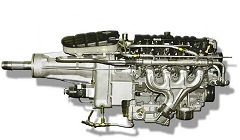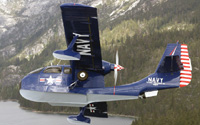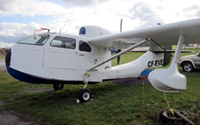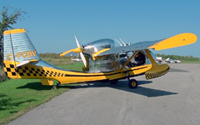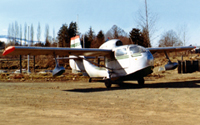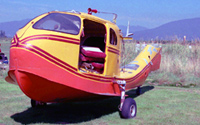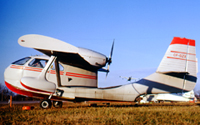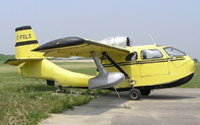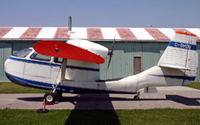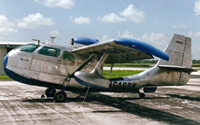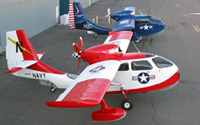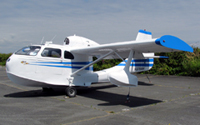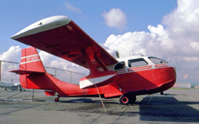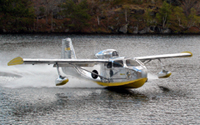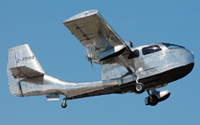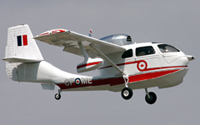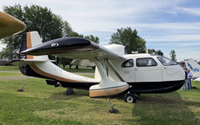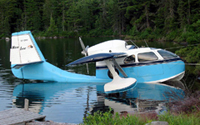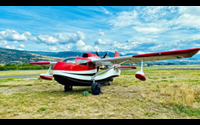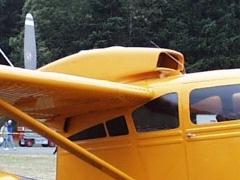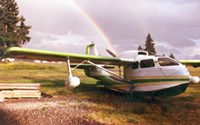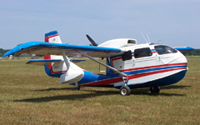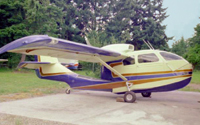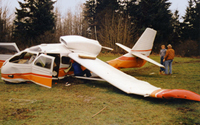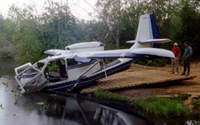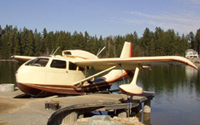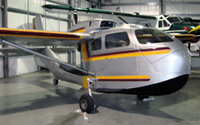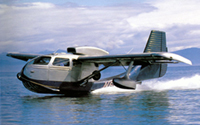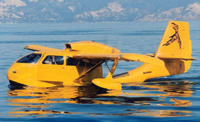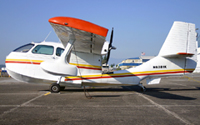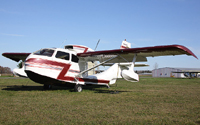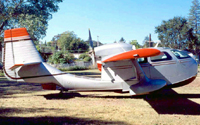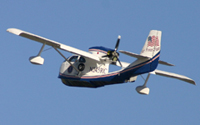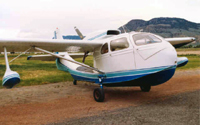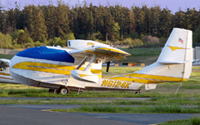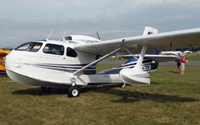|
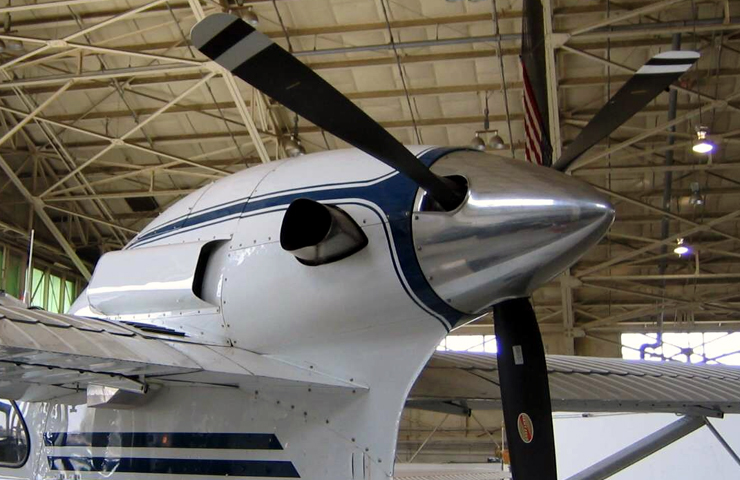
|
Most
Seabee owners and pilots agree that one of the few weak points of an original RC-3 Seabee
is the lack of engine power. The original
engine installation was a 215 hp Franklin Model 6A8-215-B8F/-B9F six cylinder
engine. The Seabee is a large airplane and with the Franklin
engine the power-loading is quite high.
The huge cabin of the Seabee invites pilots to
overload the airplane, and on a hot day a heavy loaded Franklin-powered
Seabee will be a challenge to get in the air...
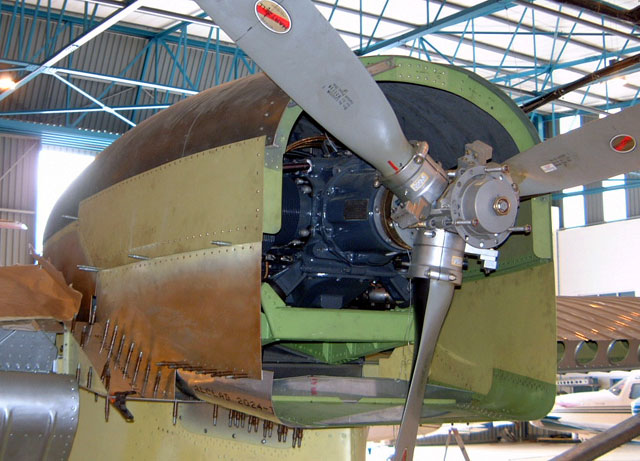
Simuflight Lycoming GO-480 Engine Conversion
Photo: © Mark Becker
Engine conversions therefore have been among the most
popular of the many modifications developed for the Seabee, after
production ceased in 1947. Many experimental one-of-a-kind
engine installations have been developed, including gas turbine
engines. Some of the engine conversions have been STC'ed and are offered commercially by a few companies. The Lycoming GO-480
geared engine conversions have become the most popular. However, the
Lycoming GO-480-series engines are no longer in production (since 1979). Direct drive
Lycoming IO/TIO-540 engine conversions have also been installed on a
number of Seabees. The O-540-series engines are still in
production at Lycoming.
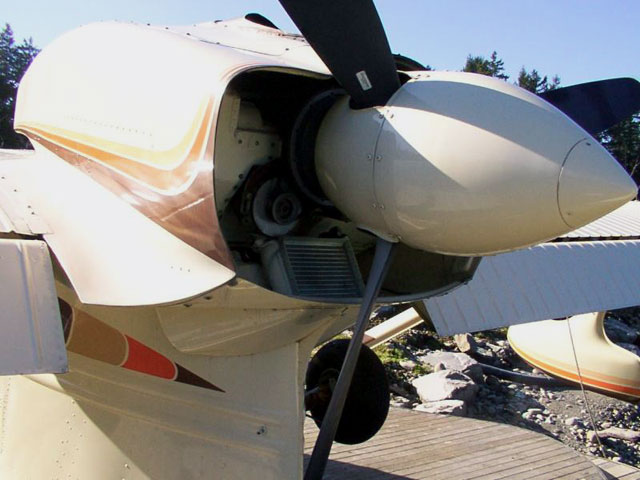
TAC Lycoming IO/TIO-540 Engine Conversion
Photo: © Randy Komko
The newest Seabee engine
conversions to emerge are the Robinson V8 engine conversions,
developed by Mr. Brian Robinson in Canada. The Robinson conversions
utilize a 320 hp LS-1 or a 350 hp LS-6 Corvette G.M. V8 engine.
Twenty-three Seabees have been converted to twin
engine configuration, through the STOL UC-1 Twin Bee conversion.
Actually, the Twin Bee conversion is so extensive that it requires a new
Aircraft Type Certificate.
|
|
Franklin Standard Engines
|
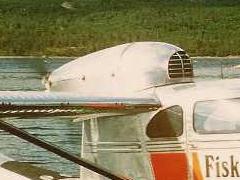
|
W.S.K. -
PZL-Rzeszow
Ul. Hetmanska 12
PL-35 078 Rzeszow
Poland
|
The original engine installation on
manufacture at Republic in 1946/47, was
the 215 hp Franklin 6A8-215-B8F/B9F six cylinder. The RC-3
prototype / pre-production aircraft originally had a Model -B7F
installed. The Type
Certificate for the Franklin engines is currently held by a Polish
company.
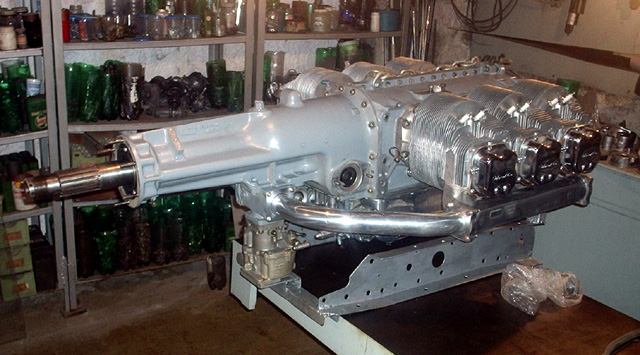
Specifications
- Franklin 6A8-215-B8F/-B9F |
| Manufacturer |
Aircooled Motors, Inc. |
| Address |
Syracuse 8, New York, USA |
| Models |
6A8-215-B8F
and 6A8-215-B9F |
| Approved Type Certificate No. |
E-242 |
| Weight - dry |
432 lbs (incl.
cooling fan and oil cooler) |
| Number of Cylinders |
6 |
| Rated Power |
215 hp |
| Rated Speed |
2500 rpm |
| Idle Speed |
500 - 600 rpm |
| Reverse Propeller Speed |
(Max)
1750 rpm |
| Crankshaft Rotation |
Clockwise |
| Propeller Shaft Rotation |
Clockwise |
| Propeller to Crankshaft Ratio |
1:1 |
| Propeller Shaft Spline Size |
SAE 20 |
| Cylinder Head Temperature |
Max. 525 ° F |
| Fuel Grade |
80 Octane Nonleaded Aviation |
| Fuel Consumption (Cruise) |
13.5
US gal/hr |
| Fuel Pressure |
2 to 9 psi |
| Compression Ratio |
7:1 |
| Piston Displacement |
500 cu in |
| Bore |
5 cu in |
| Stroke |
4.25
cu in |
| Fuel Pump |
Dual AC Diaphragm Type |
| Carburetor |
Marvel-Schebler MA4-5 # 10-3007 |
| Ignition (-B8F) |
Dual Eisemann Magneto Model LA-6 |
| Ignition (-B9F) |
1 Scintilla Magneto + 1 Auto-Lite
Distr. |
| Magneto Breaker Point Gap |
(Eisemann)
.019" to .021" |
| Distributor Point Gap |
(Auto-Lite)
.020" |
| Maximum Drop on Magneto or Distributor |
100 RPM |
| Ignition Timing |
32
º Adv. Left and Right |
| Firing Order |
1-4-5-2-3-6 |
| Spark Plugs |
Auto Lite AH4 |
| Spark Plug Gap |
.014" to .018" |
| Valve Clearance |
(lifter
bled down, cold) .040" |
| Starter |
12 Volt, Delco |
| Generator (Max 35 Ampere) |
E.AL. GGS-4801A-EO-8686 |
| Oil Capacity |
13 qts |
| Oil Temp (Max) |
260 ° F |
| Oil Pressure (Max) |
50 psi |
| Oil Pressure (Idle Min) |
20 psi |
| Oil Capacity (thru MSN 24065) |
11 qts |
| Oil Capacity (MSN 24066 and on) |
12 qts |
| Oil Specifications (Above 40 F) |
SAE 40 |
| Oil Specifications (Below 20 F) |
SAE 20 |
| Max Time Between Oil Changes |
25 hrs
|
|
|
Continental IO-470-P Engine Conversions
|
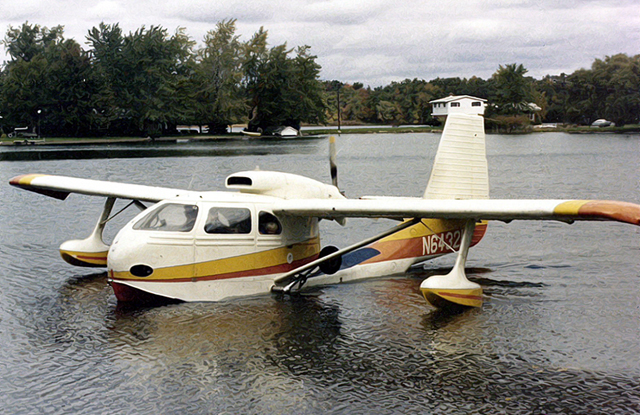
N6432K (#682)
George Pappas Continental IO-470-P engine conversion
Photo: © courtesy of Nancy and Randy Rhodes
In
the late 1960s, expert mechanic and world class metal craftsman George
Pappas installed a 250 hp Continental IO-470-P engine in his Seabee
N6432K (MSN 682) in Anchorage, Alaska, where Pappas owns a company
called Aircraft Rebuilders. Pappas also designed his special
cowlings for the Continental conversion. His conversion also have a
reversible propeller.
The original "Pappas" cowling was very
sleek and beautiful, as shown in the above photo. However, it
seems that one of the later owners modified the cowling by widening
the inlet, probably to improve cooling.
The Continental IO-470-P engine was originally
installed on the Italian NARDI / SIAI-Marcehtti FN.333 Riviera
amphibian. The supply of IO-470-P engines is less than plentyfull
and therefore this engine is quite expensive. Actually the
IO-470-P conversion has never been STCed. However, at least four
more Seabees are reported to have been modified with IO-470-P engines
under 'experimental' category; N124AC (MSN 60), N6056K
(MSN
231), N6668K
(MSN 945) and N6747K (MSN
1035).
Specifications
- Continental IO-470-P |
| Manufacturer |
Teledyne
Continental Motors |
| Address |
Mobile,
Alabama, USA |
| Models |
IO-470-P |
| Approved Type Certificate No. |
3E1 |
| Weight - dry |
472
lbs |
| Number of Cylinders |
6 |
| Rated Power (T/O) |
250 hp |
| Rated Speed (T/O) |
2600 rpm |
| Idle Speed |
? rpm |
| Reverse Propeller Speed |
? rpm |
| Crankshaft Rotation |
Clockwise |
| Propeller Shaft Rotation |
Clockwise |
| Propeller to Crankshaft Ratio |
1:1 |
| Propeller Shaft Spline Size |
SAE 20,
extended shaft with provision for hydraulic propeller control and
revering. |
| Cylinder Head Temperature |
Max.
460 ° F |
| Cylinder Barrel
Temperature |
Max.
290 ° F |
| Oil Inlet
Temperature |
Max.
225 ° F |
| Fuel Grade |
91/96 Aviation |
| Fuel Consumption (Cruise) |
? US gal/hr |
| Fuel Pressure |
-2 to
+10 psig |
| Compression Ratio |
8.0:1 |
| Piston Displacement |
471 cu in |
| Bore |
5.00
cu in |
| Stroke |
4.00
cu in |
| Fuel Pump |
? |
| Fuel Injection |
TCM
Injector (Eq. 5648) |
| Ignition (dual
magnetos) |
? |
| Magneto Breaker Point Gap |
?" to
?" |
| Distributor Point Gap |
?" |
| Maximum Drop on Magneto or Distributor |
100 RPM |
| Ignition Timing |
26
º BTC |
| Firing Order |
1-4-5-2-3-6 |
| Spark Plugs |
Auto
Lite SH26. SH260 |
| Spark Plug Gap |
?
" |
| Valve Clearance |
(lifter
bled down, cold) ?
" |
| Starter |
? Volt |
| Generator |
? Volt,
? Ampere |
| Oil Sump Capacity |
12 qts |
| Oil Temp (Max) |
235 ° F |
| Oil Pressure (Max) |
100 psi |
| Oil Pressure
(Normal) |
30 -
60 psi |
| Oil Pressure (Idle Min) |
10 psi |
| Oil Capacity |
12 qts |
|
|
'Daubenspeck' Engine Conversions
|
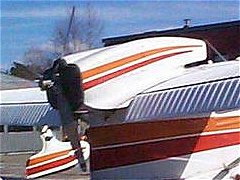 |
STC Bee, Inc.
10900 Rainier Avenue S.
Seattle, WA 98178
USA
|
In
the late 1960s engineer and Seabee owner Jack Daubenspeck, Seattle,
Washington, started to develop Seabee modifications. Daubenspeck
soon formed the company Aerocraft Inc. and initially designed, produced
and marketed some very popular fiberglass 'droop' wing tips for the
Seabee. He also started the design and development of new Seabee
engine conversions utilizing the Lycoming GO-435/GO-480 geared
engines.
At some stage of the development, Aerocraft Inc.
started accepting predelivery deposits from eager Seabee owners who
wanted to give their Seabees 'new' power. Unfortunately, engineering
problems continued and the company was forced to close down when some of
the Seabee owners lost their patience and wanted their deposits
back. The prototype 'Daubenspeck' Seabee was sold to cover the
claims, and was never flown with the Lycoming engine under Daubenspeck's
ownership.
Seabee
owner John Greeff did not loose confidence in Daubenspeck and contracted
him to finish the Lycoming GO-435/GO-480 engine conversion for his Seabee,
N6456K (MSN 707). With Mr. Greeff funding the company, Greeff and
Daubenspeck started the company 'STC Bee, Inc.' to produce and market
Daubenspeck's Seabee modifications.
For the ' Daubenspeck' engine conversion a new
"scoop type" glas fibre cowling was designed. Most
Daubenspeck conversions will be recognized by this beautiful cowling.
However, it is generally agreed that the 'Daubenspeck' cowling is
heavier (55 lbs vs 22 lbs) and less maintenance-friendly than the
'Simuflight' cowling.
The Daubenspeck Lycoming GO-435/GO-480 engine
conversions were FAA approved on 13 April 1976. Originally the
1976 FAA STC # SA-282-NW was issued for the Lycoming GO-435-series with 260 hp, the
GO-480B-series producing 270 hp on 80/87 octane fuel, the
GO-480F-series producing 275 hp on 80/87 octane fuel; and the
GO-480C/G-series
which puts out 295 hp on 100/130 octane. Approval is for engines
with rear mounted accessories and either splined or flanged output
shafts. Propellers for all approved engines are 84" diameter,
three blade, constant speed and reversible. Fabricated sheet metal
parts for the STC kits were manufactured by Robertson (STOL) Aircraft.
STC Bee,
Inc. went out of business in 1985, and Mr. Daubenspeck died year 2000.
In May 2004 it is reported that Jack's son, Mr. John A. Daubenspeck is
working on re-introducing the 'Daubenspeck' conversions and
modifications.
STC
Bee held the following STC for engine conversion:
STC No: SA282NW - Installation
of Lycoming GO-480-B1D (270 hp @ 3400 RPM), GO-480-G1D6/G2D6 (295 hp @ 3400 RPM)
engine and Hartzell HC83X20-2CL propeller.
[Issued 1976-04-13].
Specifications
- Lycoming GO-480-G1D6 |
| Manufacturer |
AVCO
Lycoming |
| Address |
Williamsport,
Pennsylvania, USA |
| Models |
GO-480-G1D6 |
| Approved Type Certificate No. |
E-275 |
| Weight - dry |
444
lbs |
| Number of Cylinders |
6 |
| Rated Power (T/O) |
295 hp
(GO-480-G1D6) |
| Rated
Engine Speed (T/O) |
3400 rpm |
| Propeller
Speed (T/O) |
2170
rpm |
| Idle Speed |
500 - 600 rpm |
| Reverse Propeller Speed |
? rpm |
| Crankshaft Rotation |
Clockwise |
| Propeller Shaft Rotation |
Clockwise |
| Propeller to Crankshaft Ratio |
77
: 120 |
| Propeller Shaft Spline Size |
SAE 20 |
| Cylinder Head Temperature |
Max.
475 ° F |
| Cylinder Barrel
Temperature |
Max.
350 ° F |
| Oil Inlet
Temperature |
Max.
235 ° F |
| Fuel Grade |
100/130
LL Aviation |
| Fuel Consumption (Cruise) |
? US gal/hr |
| Fuel Pressure |
2 to 9 psi |
| Compression Ratio |
8.70:1 |
| Piston Displacement |
479.7 cu in |
| Bore |
5.125
cu in |
| Stroke |
3.875
cu in |
| Fuel Pump |
Lear-Romex |
| Carburetor |
Bendix
PS-5BD |
| Ignition (dual) |
Bendix
S6LN-21 (Left)
Bendix S6LN-20 (Right) |
| Magneto Breaker Point Gap |
.019" to .021" |
| Distributor Point Gap |
?" |
| Maximum Drop on Magneto or Distributor |
100 RPM |
| Ignition Timing |
28 deg Adv. Left and Right |
| Firing Order |
1-4-5-2-3-6 |
| Spark Plugs |
Auto Lite AH4A |
| Spark Plug Gap |
.016" |
| Valve Clearance |
(lifter
bled down, cold) .040" |
| Starter |
24
Volt |
| Generator |
24
Volt, 50 Ampere |
| Oil Capacity |
12 qts |
| Oil Temp (Max) |
235 ° F |
| Oil Pressure -
Normal (Min - Max) |
65 -
85 psi |
| Oil Pressure (Idle Min) |
25 psi |
| Oil Sump Capacity |
12 qts |
|
|
Robinson V8 Engine Conversions
|
The Robinson engine conversion is the newest on the
market, and has stirred a huge interest among Seabee owners.
Developed by Canadian Brian Robinson, the conversion utilize a Corvette
V8 automobile engine mated to a cast aluminum reduction drive designed
specifically for the Seabee.. To date the Robinson's have developed &
flown the 320 hp LS1 version & the 350 hp LS6 version. Late
2005 the new 350 hp LS2 and 400 hp LS7 versions were installed in
the first Seabees.
The conversions have been successfully
flown using both standard Seabee 2 and 3 blade propellers and modern 4
blade MT propellers. Robinson has also developed a system which uses the Hartzell constant
speed reversible propeller from a GO-480 powered Seabee.
The engine can use both premium unleaded automotive
fuel and 100 LL aviation fuel.
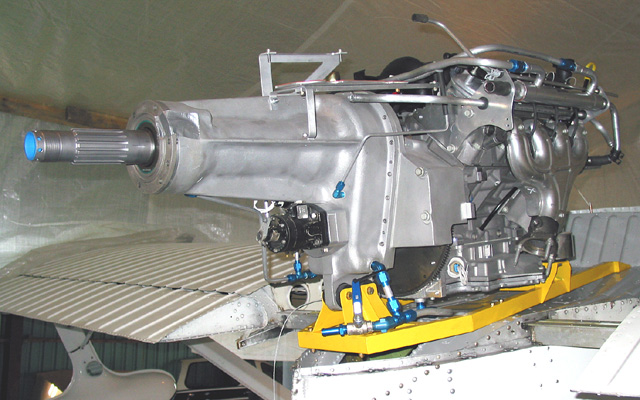
Robinson V8 Engine Conversion
Photo: © Brian Robinson
August
2005:
Brian Robinson reported that interest in the V8 powered Seabee
continued to grow. Seven converted Seabees were flying, and four more
were under conversion. The first U.S. licensed V8 powered Seabee is the
"Tahoe Special". Rebuilt from the ground up by Steve
Lantz
& Paul Shepard, the Tahoe Special is powered by an LS6 coupled to a
four-blade MT reversible propeller. The aircraft won the Grand Champion
Seaplane award at EAA Airventure 2005 in Oshkosh! Based at Carson,
City Nevada, they often fly from land or water with density altitudes in
the 9000’ range.
Steve
& Paul consider the air conditioning essential for operating in
their climate.
Total
fleet time is approximately 1800 hrs.
The highest time V8 Seabee is Brian's own airplane CF-ILM. It has accumulated 1176 hours.
The longest trip has been from
Balsam
Lake to
Key West
Florida
and return. They use
whatever fuel is available, automotive or aviation. The aircraft
continues to perform flawlessly. The V8 installation has been operated
from sea to level to 10,000 ft, and in temperatures ranging from -20°F
to 113°F.
November
2014:
|
We flew the original installation 2,098
hours in the period from 4 July 2000 to 23 Dec 2011. During
that time the aircraft performed far above my expectations.
The engine and PSRU was performing well when it was removed.
We removed it because my system was becoming dated. My
aircraft was the first V 8 conversion done. It was running an
LS 1 with a manual throttle standard Seabee Hartzell 3 blade
propeller and our 1.68:1 reduction ratio. Most of my customers
use the 1.98:1 ratio with an electric throttle.
The Bee had a conventional (dated) panel
and was in need of some upgrading. We refurbished ILM with
many improvements including a new LS 3 sporting a modified
Edelbrock supercharger, a new design single leaver control
system that combines throttle, pitch, reverse &
supercharger control functions in one unit, and a new design
data link that allows the engine data to be sent directly from
the engine control unit to the new MGL IEFIS based panel. The
data link avoids the hassle of wiring in engine sensors and
has the benefit of letting the pilot monitor the actual GM
engine sensors that control the engine.
We were back in the air 14 Jan 2014 and
now have 99 hours on the new installation. I am really happy
with the performance of the new engine and associated
systems.
I am sure ILM is one of most highly modified Seabee ever
flown. The list of modifications are as follows: (Ed: too
long to list here, see C-FILM )
I have not documented any performance
numbers. For them to mean anything I would have to calibrate
all the instruments & standardize the data. Sufficient to
say I have flown ILM in side by side comparisons with many
Seabees, and none of them have come close to matching the
performance. The LS 3 is a noticeable improvement over the LS
1. I have only had the new engine to 10,000’ but I was able
to still pull 30” HG. Someday I will borrow an oxygen system
and explore the higher elevations.
These days my focus has shifted from the Seabee to trying to
raise capital to build the prototype of our new Horizon X2 -
the first amphibian you can land on the water with the wheels
down without hurting yourself!
Visit our website www.V8Seabee.com
and check out the Conversion Kits/Current status and Horizon
X2 tabs for more pictures and information.
Regards
Brian
E-mail dated November 21, 2014
|
|
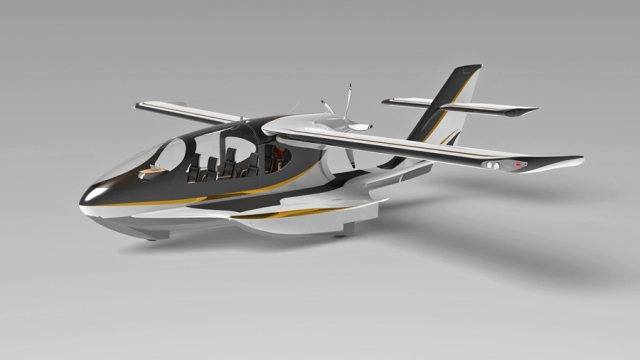
|
|
The Robinson
Horizon X2
The Next Generation Seabee! |
USA Licensing Options
In
the U.S. the only viable licensing option Robinson has been able to
identify is compliance with the amateur built rules. In theory the
aircraft could be licensed by using a one time STC or via the 337
processes. We have been unable to find an inspector willing to do this.
The amateur built process is as follows
You
currently cannot take a certified aircraft & license it as an
amateur built aircraft. You can however build an amateur built aircraft
using mostly certified aircraft components. This is only practical if
the airframe is going to be refurbished. The process begins by removing
the Manufacturers nameplate & ensuring the aircraft has been removed
from the registry. You must then simply comply with the "51%"
rule checklist. The only confusing part is that the 51% checklist has
nothing to do with 51% of the work being done. It is simply a scorecard.
You the owner must complete 51% of the items on the FAA approved
checklist. There have been several Cessna 185 & 206
"replicas" built & licensed as amateur built aircraft.
These aircraft are eligible for export to Canada & are permitted to
cross the border. You may also import a Canadian amateur built aircraft
into the U.S. It is important to note you cannot call the aircraft a
Seabee. It must be called something else, e.g. A Robinson V-8 powered
Bee. The name Seabee refers to a certified aircraft. If you call the FAA
& tell them you are going to build an amateur built Seabee you will
be turned down. If you call the FAA & tell them you are going to
build a Robinson V-8 powered Bee (or any other name of you're choice) -
an all aluminum, V-8 powered amphibian using modified Seabee components
- they will inform you that you must comply with the 51% rule and
instruct you to complete a 51% evaluation sheet. If your project meets
the 51% criteria, it will be eligible for registration as an amateur
built aircraft. The checklist is found on the FAA web site.
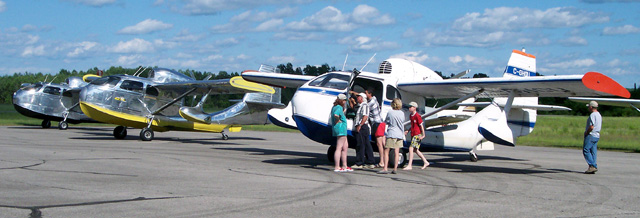
Robinson V8 Engine Conversions
C-FDOQ (MSN 934), CF-ILM (s/n
881) and C-GHQU (s/n
639)
Photo: © Brian Robinson
Below is a description of the protoype LS1
installation as installed on Robinson's Seabee CF-ILM.
Engine
- The LS1, Corvette version, was a stock unit as purchased new from GM.
It is rated at 345 HP @ 5600 RPM and produces 350 ft lbs torque @ 4400
RPM. The engine has been mated to a custom built 1.7:1 reduction unit.
The engine was de-rated to approximately 320 HP by limiting the engine
to 4500 RPM. This permitted the prop to turn @ 2600 RPM. (Maximum rating
for the Hartzell Propeller installed on CF-ILM). Robinson believed
that de-rating the engine should help him reach his number one objective
- reliability. A large engine working at less than maximum power
should last significantly longer than a small engine that is working
it's heart out...
The engine was equipped with stock Corvette
exhaust manifolds, machined to remove excess weight and mated to
dual stainless steel mufflers. The mufflers and pipes were
insulated reduce the heat buildup under the cowling.
The electric throttle body actuator was removed
and replaced with the cable controlled mechanical throttle body
actuator (KISS).
The engine was equipped with the stock GM air
conditioning compressor.
The stock alternator was lowered to the same
position used on the Camaro version of the LS-1 to provide
clearance for the stock Seabee cowlings.
Reduction
Unit - The reduction drive was custom designed to fit the Seabee
installation using AutoCAD. It is based on standard Morse Hi VO chain
and sprockets, and was sized and installed as per their technical
publication. The chain is lubricated with engine oil via a spray bar.
Morse does not condone the use of their product in aircraft. The
aluminum housing was cast, aged and tempered in a local foundry. All
machining was done locally on a milling machine equipped with a digital
readout. The design was loosely patterned off of the existing Franklin
engine extension, with changes as required to maintain the existing
thrust line and propeller position.
All thrust loads (forward and reverse) are carried by
the rear reduction unit bearing. This is a copy of the Franklin setup
and the thrust bearing used is the same as the original. The propeller
pitch control system is identical to the Franklin set up. It has proven
to be trouble free over the years. Oil return is by gravity to the
engine sump, and all oil is filtered through a custom remote oil
filtering system. The drive mates to the engine via a splined adapter
bolted directly to the flywheel. The heavy manual version of the
flywheel was used as a safeguard against any potential vibration
concerns.
Cooling
System - The liquid cooling is provided by a stock Corvette
radiator, complete with stock electric cooling fans controlled by the
computer. A manual over ride switch for the fans was added so that
the pilot can turn the fans on anytime he pleases. The stock air
conditioning condenser is mounted in front of the radiator as it is in
the Corvette.
Fuel - Fuel
is supplied via manually controlled dual electric fuel pumps, complete
with a water separator and dual automotive filters. Operating pressure
range is 58 - 62 PSI. The LS1 will run on either premium
automotive fuel or 100 Low Lead aviation fuel.
Engine
Control System - The system chosen was a standard GM system.
The unit is programmed with the export code for leaded fuel and uses no
oxygen sensors. This was to enable owner to run 100 octane Low Lead fuel
as well as premium unleaded fuel. It also meets the KISS criteria. The
emission and VAT codes are suppressed. The computer is stock GM. After
much research and correspondence, the wiring harness was purchased from
an after market supplier. This portion of the project was as time
consuming as designing the reduction drive. Robinson learned that it is
imperative for a project like this to purchase the factory (not after
market) manuals for the engine and read them thoroughly. You have to
decide what is acceptable practice, how you want your engine management
system to work, and have the harness manufactured accordingly.
The option of installing a second (backup) computer
was discussed with many individuals. The resulting opinion was that the
computer used is extremely reliable. The risk of a total computer
failure is probably in the same league as a crankshaft or timing chain
failure. The installation of a second computer would make the wiring
harness considerably more complicated and increase the risk of a wiring
harness/switching circuit failure. In the Robinson installation,
Computer Power is supplied from one of two full size batteries. The
batteries can be manually isolated in case of an alternator failure. The
computer power source is selected manually.
Wiring
Harness - The harness must be integrated into the airframe.
Robinson believes that the odds of a wiring harness failure are greater
than the risk of a mechanical failure (and you probably will get less
warning). The harness utilizes crimped and/or soldered terminals. A good
quality crimper was purchased and mil spec terminals and wires were used
throughout. Routing, visibility, protection and security of the harness
were installation priorities.
|
| Manufacturer |
GM |
GM |
GM |
GM |
GM |
| Model |
Camaro
LS1 |
Corvette
LS1 |
Corvette
LS2 |
Corvette
LS6 |
Corvette
LS7 |
| Displacement |
346
cu in |
346
cu in |
364
cu in |
346
cu in |
427
cu in |
| Bore
x Stroke |
3.90
x 3.62 in |
3.90
x 3.62 |
4.00
x 3.62 in |
3.90
x 3.62 |
4.125
x 4.00 in |
| Comp
Ratio |
10.1:1 |
10.1:1 |
10.9:1 |
10.5:1 |
11.0:1 |
| Cylinders |
8 |
8 |
8 |
8 |
8 |
| Cooling
System |
Liquid |
Liquid |
Liquid |
Liquid |
Liquid |
| Fuel
System |
Multi-port
Injection |
Multi-port
Injection |
Multi-port
Injection |
Multi-port
Injection |
Multi-port
Injection |
| Fuel
Grade |
91
Octane Unleaded or 100 Octane |
91
Octane Unleaded or 100 Octane |
Regular
Unleaded or 91
Octane Unleaded or 100 Octane |
91
Octane Unleaded or 100 Octane |
91
Octane Unleaded or 100 Octane |
| Ignition
System |
Computerized
Electronic - 8 Coils |
Computerized
Electronic - 8 Coils |
Computerized
Electronic - 8 Coils |
Computerized
Electronic - 8 Coils |
Computerized
Electronic - 8 Coils |
| Rated
Power |
325
hp @ 5200 rpm |
350
hp @ 5200 rpm |
400
hp @ 6000 rpm |
405
hp @ 6000 rpm |
505
hp @ 6300 rpm |
| Operating
Power |
300
hp @ 4500 rpm |
320
hp @ 4500 rpm |
350
hp @ 4500 rpm |
350
hp @ 4500 rpm |
400
hp @ 4500 rpm |
| Engine
Torque |
330
ft lbs @ 4500 rpm |
350
ft lbs @ 4500 rpm |
400
ft lbs @ 4400 rpm |
385
ft lbs @ 4500 rpm |
475
ft lbs @ 4800 rpm |
| Propeller
Torque |
463
ft lbs @ 2600 rpm |
499
ft lbs @ 2600 rpm |
|
549
ft lbs @ 2600 rpm |
|
| Reduction
Ratio |
1.7:1 |
1.7:1 |
1.7:1 |
1.7:1 |
1.7:1 |
| Brake
Specific Fuel Consumption Ib/hr @ 3200 R.P.M. |
0.507 |
0.454 |
|
0.500 |
|
| Cabin
Heating |
Forced
Air Hot Water |
Forced
Air Hot Water |
Forced
Air Hot Water |
Forced
Air Hot Water |
Forced
Air Hot Water |
| Air
Conditioning |
Forced
Air Mechanical |
Forced
Air Mechanical |
Forced
Air Mechanical |
Forced
Air Mechanical |
Forced
Air Mechanical |
| Exhaust
System |
SS
Pipes and Mufflers |
SS
Pipes and Mufflers |
Ceramic
coated stainless muffler system |
SS
Pipes and Mufflers |
Ceramic
coated stainless muffler system |
| Rec.
TBO |
1300
h |
1300
h |
|
1300
h |
|
| Water
Take Off |
15
sec |
?
sec |
?
sec |
?
sec |
?
sec |
| Land
Take Off |
10
sec |
?
sec |
?
sec |
?
sec |
?
sec |
| Rate
of Climb |
1075
fpm |
1075
fpm |
?
fpm |
1125
fpm |
?
fpm |
| Power
Loading |
9.8
lbs/hp |
?
lbs/hp |
?
lbs/hp |
?
lbs/hp |
?
lbs/hp |
| Cruise
Speed |
110
mph |
?
mph |
?
mph |
?
mph |
?
mph |
| Fuel
Consumption |
10.8
US GPH |
10.8
US GPH |
?
Imp GPH |
10.8
Imp GPH |
?
Imp GPH |
| Range |
714
mi |
714
mi |
?
mi |
714
mi |
?
mi |
| Endurance |
6.5
h |
6.5
h |
?
h |
6.5
h |
?
h |
| Useful
Load CDN @ 3150 Lbs |
690
lbs |
?
lbs |
?
lbs |
?
lbs |
?
lbs |
| Useful
Load US @ 3250 Lbs |
790
lbs |
?
lbs |
?
lbs |
?
lbs |
?
lbs |
|
Pratt & Whitney PT6A Turbine
Engine |
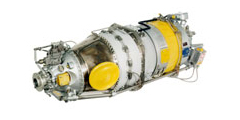 |
Mark Ward
SkyMark Aviation Services
David Saunders
AviaDesign Services Inc.
|
The Sea
Hornet conversion has a Pratt & Whitney Canada PT6A-20 turbine engine, turning
a specially built Hartzell 3 blade full feather, reversing propeller.
The engine has been
de-rated to 400 SHP.
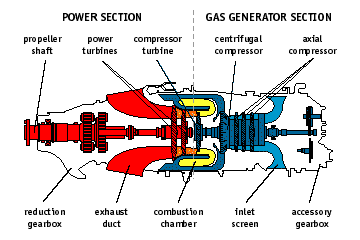
The subject
Seabee is registered on the Canadian Civil Aircraft Register as C-GNVS
(MSN 465). The listed owner is Mr. R. Wallace of Bellingham,
Washington, USA. However, the modifications and flight testing are
reported to be taking place in California. From the photos it is also seen that
the Seabee has gotten a serious 'nose-job'! Also noted are the
struts on the tailplane. The Turbine Seabee project has been named The
'Sea Hornet'.
The people behind the Turbine Seabee project -
Mr. David Saunders (Avaiadesign Inc.) and Mr. Mark Ward (SkyMark Aviation Services/AviaDesign Services Inc)
- report that they already have accumulated a few
hours on the 'Sea Hornet' and no problems have been experienced so far.
The Sea Hornet was also modified to get
sponsons replacing the wing floats for water stability. However,
this modification was abandoned before completed.
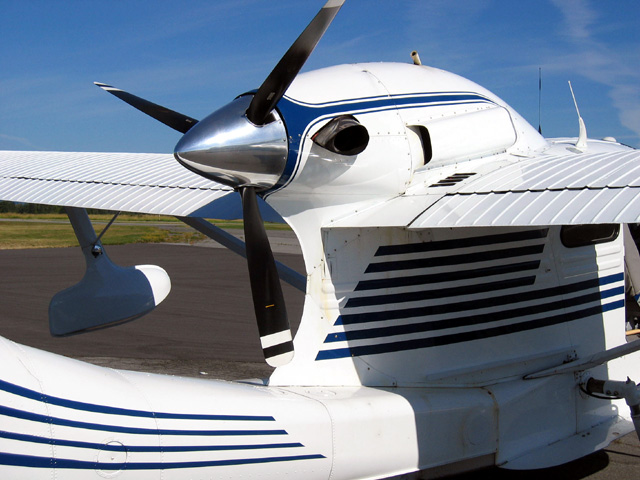
C-GNVS (MSN 465)
PWC PT6A-20 Turbine Engine
Photo: © via Bruce Hinds
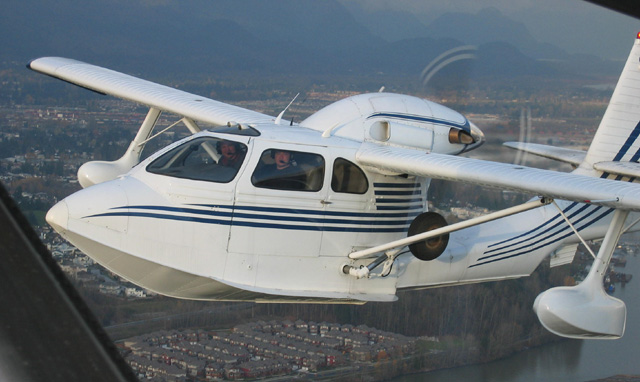
Specifications
- Pratt & Whitney Canada PT6A-20 |
| Manufacturer |
Pratt
& Whitney Canada |
| Address |
Canada |
| Model |
PT6A-20 |
| Type |
Two-shaft
axial-plus-centrifugal free-turbine |
| Take
off power |
550
shp to 70° F |
| ESHP |
579 |
| Max
continous power |
550
shp to 70° F |
| Max
climb power |
538
shp |
| Max
cruise power |
495
shp to 59° F |
| |
|
|
|
Simuflight Engine Conversions
|
The most popular of all Seabee engine conversions
available is undoubtedly the Simuflight Lycoming conversions. Developed by Joe McHugh,
the Simuflight conversions represent the majority of all Seabee engine
conversions installed. Sadly Joe McHugh was killed as a passenger
in an airplane accident on 16 June 2003.
In August 2003, Mr. Scott A. Henderson, announced
that he and his sisters intend to continuing the legacy of their
father Joe McHugh, as soon as the estate is sorted out. They
expect to be back in operation beginning in February 2004. Simuflight
will be merging with KenAir Aviation Co. of Sonoma, CA, (Ken Thompson)
and will be building a new facility in Fallon, Nevada. The plan is to
offer complete Seabee maintenance and restoration at the new facility.
Restoration and maintenance work is scheduled to begin on 1 October
2004.
Simuflight has a huge inventory of Seabee parts
along with all the kits that Joe McHugh developed through the years.
McHugh salvaged every Seabee part he ever came across through the
years and if you can't find it in Simuflight's inventory, then it most
likely doesn't exist any longer. Simuflight also have a number
of critical parts that McHugh invested in having remanufactured before
the originals were lost forever.
Simuflight will also be completing a number of STC's that McHugh had
started but never finished. Seabee owners that need parts and kits are
encouraged to make orders now, so that Simuflight can ship them before
they move to Fallon.
All inquiries should be forwarded to the above contact information.
Both the STC Bee (Daubenspeck) and Simuflight
Lycoming engine conversion utilize the the GO-435 and GO-480 engine
series. The geared Lycoming GO-480 engine allows a reduced propeller
speed, 2170 rpm at engine speed of 3400 rpm, with reduced noise as a
result. Data for the GO-480 engine can be found above. Due to the
higher mount of the Simuflight engine conversion, larger propeller
diameters can be installed on the Simuflight (89")
conversions than on the Daubenspeck (84") conversions.
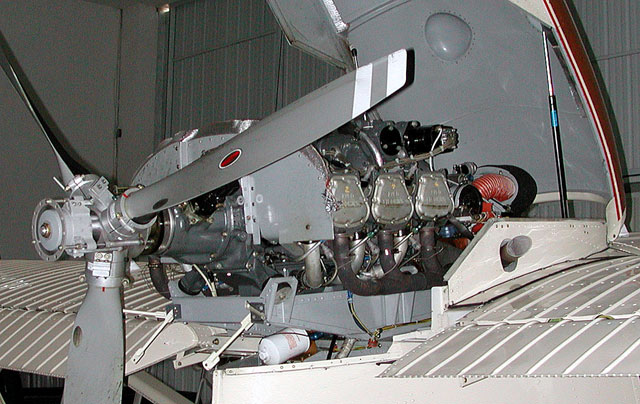
The main features of the Simuflight engine
conversions are as follows:
Cowling
- The Simuflight engine cowling is fabricated from two original Seabee
aluminum cowlings that are modified to form on single piece weighing
only 22 lbs. The cowl is hinged at the forward end and opens
with the release of two lever fasteners - one at each side.
Engine Mount
- Is made almost completely of aluminum and weighs 14 lbs. It
has been statically tested and approved by FAA. The rubber "Lord
Mounts" are mounted at 45º angle to the engine vertical.
The Simuflight mount is designed to transfer engine loads into the
firewall and rear cabin, as on the original Franklin engine
installation.
Exhaust
System - Uses existing Seabee collectors which are welded to
Lycoming flanges, to attach to the cylinders. The exhaust is
routed forward from the cylinders and exhausted upward over the center
of the wing at a 45º angle, to prevent exhaust burn stains and to
reduce noise.
STRuctural
Modifications - The rear firewall section (triangular area
aft of the rear spar) is lowered approximately 10 inches to make room
for the carburetor or fuel injector unit. An access door is
provided on the left side for removal or inspection of the carburetor
components. The rear spar is strengthened on both sides directly
under the engine mount. Forward spar is strengthened by adding a
stiffener below and with the use of a number of "Cherry Loc"
rivets to further attach the web material to the forward spar.
Air
Filetering - Carburetor induction air is filtered at the
intake located forward of the engine to provide the coolest and
cleanest pickup air.
Propeller
- Hartzell constant speed and reversible 2 blade or 3 blade. The
blades are 9333, which are cut off four inches at the factory to give
89 inches blade length.
Gross Weight
- The Simuflight engine conversions allow gross weight increase of
Seabee from original 3150 lbs to 3250 lbs.
STC No:
SA615NW - Installation
of Lycoming GO-435-C2B, GSO-/IGSO-480 series and GO-/IGO-480 series engine
with Hartzell HC-A2V20 and HC-A3VF series propellers; new nacelle and
engine mount; modified front and rear spar and aft firewall; and
associated systems. [Amended 1992-02-28].
STC No:
SA5684NM - Installation
of Lycoming GSO-/IGSO-480 series engine; Hartzell HC-A3V20 propeller;
new nacelle and engine mount; modified front and rear spar and aft
firewall; and associated systems. [Issued 1992-02-19].
|
|
T.A.C. Engine Conversions
|
Owned
by Mr. Randy M. Komko, Transition AirCraft, Inc., (TAC), has developed the
Lycoming IO-540 (250 - 300 hp) and Lycoming TIO-540 (300 - 350 hp) 'direct
drive' engine conversions for the Seabee. The TAC conversions
utilize the 'Daubenspeck'-type cowling.
In co-operation with other parties, Mr. Komko has
also been involved in the development, installation and flight-tests of
a number of GO-480-series engine conversions since 1976, including the
the first GSO-480 (340 hp) Seabee engine conversion installed (N6124K
MSN 310 flying on 1983-10-08).
Here is a list of some of the "TAC"
Seabees:
Randy also offer several other Seabee modifications;
including 6 place interior, droop wingtips, new wing floats, new spray
rails.
TAC holds the following engine conversion STCs:
STC No: SA5652NM -
Installation of a Lycoming TIO-540-A2B engine together with a Hartzell
HC-E3YR-7LF/FLC8468-4R propeller. [STC reissued 1992-03-31].
STC No: SA4330NM -
Installation of a Lycoming IO-540-K engine (N6290K).
Specifications
- Lycoming IO-540-K & TIO-540-A2B |
| Manufacturer |
AVCO
Lycoming |
| Address |
Williamsport,
Pennsylvania, USA |
| Models |
IO-540-K
TIO-540-A2B |
| Approved Type Certificate No. |
1E4
(IO-540K)
E14EA (TIO-540-A2B Issued 1968-04-01) |
| Weight - dry |
438
lbs (IO-540-K)
509 lbs (TIO-540-A2B) |
| Dimension (H x W x
L) |
19.60x34.25x39.34
in |
| Number of Cylinders |
6 |
| Rated Power (T/O) |
300 hp
(IO-540-K)
310 hp (TIO-540-A2B) |
| Rated Speed (T/O) |
2700 rpm (IO-540-K)
2575 rpm (TIO-540-A2B) |
| Idle Speed |
? rpm |
| Reverse Propeller Speed |
? rpm |
| Crankshaft Rotation |
Clockwise |
| Propeller Shaft Rotation |
Clockwise |
| Propeller to Crankshaft Ratio |
1:1 |
| Propeller Shaft |
SAE
A.S. 127 Type 2 Modified |
| Cylinder Head Temperature |
Max.
500 ° F |
| Oil Inlet
Temperature |
Max.
245 ° F |
| Exhaust Gas
temperature |
Max.
1650 ° F |
| Fuel Grade |
100/100LL Aviation |
| Fuel Consumption (Cruise) |
? US gal/hr |
| Fuel Pressure
(above injector inlet air pressure) |
25 to
45 psi |
| Fuel Pressure
(above ambient air pressure) |
-2
to 40 psi (IO-540-K)
-2 to 65 psi (TIO-540-A2B) |
| Compression Ratio |
8.70:1 |
| Piston Displacement |
541.5 cu in |
| Bore |
5.125
cu in |
| Stroke |
4.375
cu in |
| Fuel Pump |
? |
| Fuel Injection |
RSA-10AD1 |
| Turbocharger
(TIO-540-A2B) |
TE0659 |
| Turbocharger
Compression Ratio |
7.30:1 |
| Ignition (dual) |
TCM
S6LN-1208 (Left?)
TCM S6LN-1209 (Right?) |
| Magneto Breaker Point Gap |
?" to
?" |
| Distributor Point Gap |
?" |
| Maximum Drop on Magneto or Distributor |
100 RPM |
| Ignition Timing |
20
ºBTC |
| Firing Order |
1-4-5-2-3-6 |
| Spark Plugs |
? |
| Spark Plug Gap |
?" |
| Valve Clearance |
(lifter
bled down, cold) ?" |
| Starter |
? Volt |
| Generator |
? Volt,
? Ampere |
| Oil Sump Capacity |
12 qts |
| Oil Temp (Max) |
235 ° F |
| Oil Pressure -
Normal (Min - Max) |
55 -
95 psi |
| Oil Pressure (Idle Min) |
25 psi |
| Oil Capacity |
12 qts |
|
|
Turbomeca Astazou II Turbine Engine
|
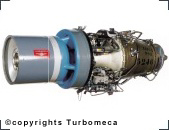 |
Clark Cameron
Robert A. Mael
Canada
Experimental |
The
Turbomeca Astazou II L turboprop engine installation on Seabee CF-MYT
(MSN 1025) was engineered for owner (?) Bernard Robillard, Montreol, Canada,
by Robert A. Mael; Northeast Engineering and Development Ltd. during
the late 1970ies. The installation was completed on 7 October
1980.
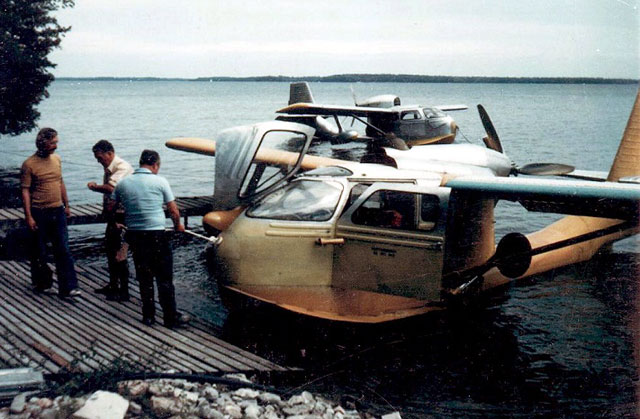
Turboprop Seabee CF-MYT (MSN 1025)
Balsam Lake, Ontario, Canada
Photo: © Blair Robinson
After skis had been installed on the Seabee early in
January 1982, the Turbine Seabee made her first flight on 15 January
1982 with pilot/owner Clark Cameron at the controls. Several test
flights were made during January/February, achieving speeds in excess of
155 mph at 95% power, rate of climb 2700 ft/min at 100% power and fuel
consumption of 12 US gal per hour at 55% power and cruise speed of 110
mph.
Mr. Blair Robinson kindly supplied the following
additional information:
These photographs were taken at fathers dock on
Balsam Lake, Canada. Clark was a close friend of the family, &
his Bee was based on Canal Lake, several miles from dads... This Seabee
was designed, built & flown by the late Clark Cameron. He passed
away suddenly walking away from the Bee after a test flight on skis. The
airplane changed hands several times after his passing, but to my
knowledge has not flown since Clark’s last flight.
I have many fond memories of the Ontario Seabee
club meetings which were held at Clark’s house. He would often
entertain the group by firing up the engine which was mounted in a test
stand chained to his well to prevent it from moving. The engine was a
Turbomeca Astazou. It was extremely noisy, his neighbors must have
loved him! Many club meetings were spent debating the design concepts.
If my memory serves me correct the engine was rated at 450 HP. Clark
promised the DOT he would de-rate the engine to 250 HP. He was never
able to figure out how to de-rate the engine and flew it with the full
450 HP. Clark owned his own machine shop and manufactured most of the
components himself.
One of the pictures shows Clark in the middle, our
dad Eric Robinson on the right and I am on the left. The day that these
pictures were taken both dad and I flew Clark’s Seabee. Unfortunately
Clark passed away early the following year. He proved the airplane would
fly but never got the opportunity to complete the project or solve some
of the issues such as hot starts, prop control, excessive noise and
severely limited range. The airplane was operated under an experimental
certificate only. My brother snapped these pictures with his Polaroid
camera, we wish we had more...
CF-MYT is currently (since 1994-09-26) owned by Mr.
Jean-Marc Rochette; 1905 Rte Du Domaine, St-Raymond, Quebec G3L 3A5,
Canada.
Specifications
- Turboméca Astazou II L |
| Manufacturer |
Société
Turbomeca |
| Address |
Bordes,
F-64320 Bizanos, France |
| Model |
Astazou
II L |
| Type |
Single-shaft
axial-plus-centrifugal turboprop |
| Approved Type Certificate No. |
? |
| Weight - dry |
348
lbs |
| Rated Power (T/O) |
523
shp |
| Maximum
Continuous |
475
shp |
| Rated
Turbine Speed (T/O) |
43 500 rpm |
| Maximum
Continuous Speed |
43
500 rpm |
|
|
W. E. Aerotech Engine Conversions
|
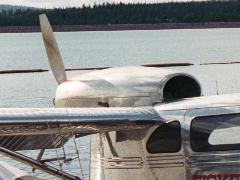 |
W. E. Aerotech Services
West 171 Sanderson Way
Shelton, WA 98584
USA
|
W.
E. Aerotech Services was run by Mr. Donald 'Don' Wallace and Mrs.
Deborah Wallace Aerotech 'remanufactured' a number of Seabees until year 2000, when the company went out of
business. They also had under development a Continental IO-520
engine conversion. STC No:
SA00332SE - Installation
of a Lycoming GSO-480-B2C6 engine (340 hp @ 3400 rpm) and Hartzell HC-A3CF-23L
reversible propeller [Issued 1996-04-26].
|
|
Cukurs Engine Conversions
|
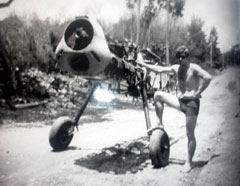 |
Gunars Cukurs
Brazil
|
In
Brazil Mr. Gunnar Cukurs operated several Seabees for more than 4
decades. During those years at least two one-of-a-kind engine
conversions were developed by Cukurs and tested on
the Seabees. When the crankshaft of one the Franklin engines
broke, the Franklin engine was replaced by an Argus AS10C engine from a
pre-WW2 Focke Wulf 56 aircraft! The engine had a power of 240 hp
at 2000 hp. Later a Lycoming GO-435 engine was installed from a
Pilatus PC3 aerobatic aircraft. Finally the now common GO-480-G2D6
engine conversion was installed.
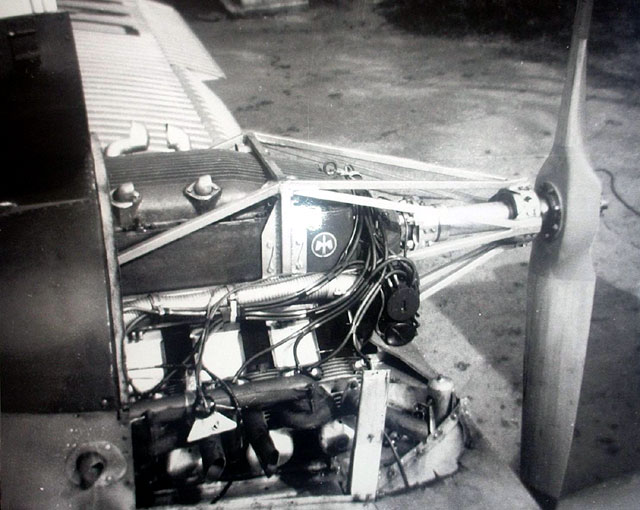
Argus AS10C engine installation
Photo: © via Richard Cukurs
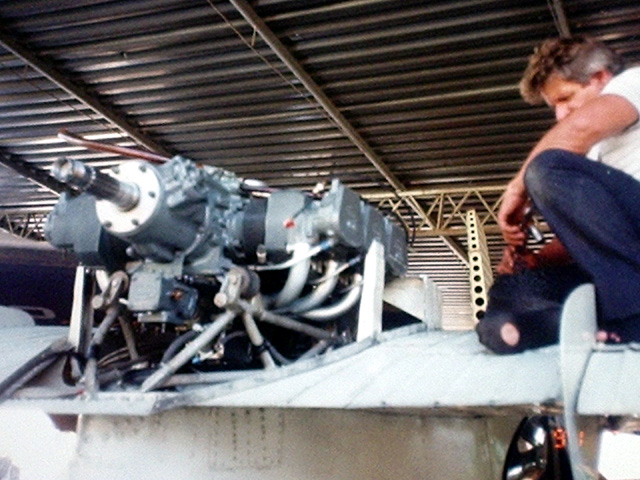
Lycoming GO-435 (?) engine installation
Photo: © via Richard Cukurs
|
|







